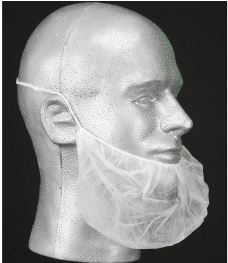We use cookies to make your experience better. To comply with the new e-Privacy directive, we need to ask for your consent to set the cookies. Learn more.
5 Pieces of Essential Equipment for Food Safety at Production Plants
In April of 2015, Southern ice cream manufacturer Blue Bell announced an emergency recall of all of its products after the Centers for Disease Control and Prevention (CDC) confirmed a listeria outbreak linked to the company's products. Ten people became sick as a result of the contamination; three died.
Across three facilities suspected of spreading the infection, FDA inspectors observed a string of sanitation failures that allowed the deadly bacteria to thrive on production equipment. Employees at one plant failed to clean food-contact surfaces frequently enough, and didn't wear beard covers as required by FDA guidelines. At another facility, employees didn't wash their hands as often as they should have, and FDA inspectors observed employees touching non-food contact surfaces with the same gloves they would later use to touch food production areas.
How can you avoid these problems at your food production facility? It’s a complex issue, but you can start by providing employees with adequate sanitation equipment. Here are a few items you'll need to keep on hand to prevent dangerous food-safety issues like the ones suffered at Blue Bell:
Hand washing Facilities
The 2013 FDA Food Code requires staff who have contact with unpackaged food or food-contact surfaces to wash their hands "as often as necessary to remove soil and contamination." Improve staff compliance by providing convenient access to sinks, soap dispensers, and paper towels. Because employees shouldn't wash their hands in food preparation or equipment washing sinks, you'll need to provide separate hand washing facilities. 
Thermometers and Other Measuring/Regulating Devices
Freezers and cold storage areas help to keep food safe, but they require careful monitoring to make sure they remain within appropriate temperature levels. FDA regulations require thermometers or other temperature-measuring devices in all cold storage compartments and anywhere on the production line where temperature changes could lead to the growth of dangerous microorganisms.
Signage
Signs improve compliance with food safety protocols by reminding staff of the behavioral components of your sanitation plan. Post signs prohibiting eating, drinking, chewing gum, and tobacco use in all food-preparation areas.
Work Clothing and Hair Restraints
When you're working with large vats of ingredients, it's all too easy to dip your sleeve into the food. That's why staff should always wear clean outer clothing along with full hair restraints: depending on the hairstyle, that could include hair nets, bouffant caps, and/or beard nets.
Foam Cleaning Systems
Choose production equipment that’s designed to be cleaned. Machine components that contact food should be removable, and they shouldn't have any creases or seams that might harbor bacteria. Foam cleaners cover more area on food production equipment and remain active on surfaces for longer than liquid cleaners, so invest in foam tanks or even a central foam system that automates cleaning tasks. Make sure the concentration of cleanser in the foam mixture is strong enough to kill microorganisms.
With proper equipment — and a robust sanitation program in place — your facility can prevent food contamination while still maintaining an efficient and productive operation.
References:
2013 Food Code. College Park, MD: U.S. Public Health Service, Food and Drug Administration, 2013. PDF. 26 Aug. 2015.
Carsberg, Henry. “Sanitation Equipment to Fit Your Needs.” Food Quality & Safety. Wiley Periodicals, Inc., 1 June 2010. Web. 26 Aug. 2015.
Chappell, Bill. “Blue Bell Says Its Ice Cream Will Be Back In Some Stores Next Week.” NPR. National Public Radio, 24 Aug. 2015. Web. 26 Aug 2015.
“Multistate Outbreak of Listeriosis Linked to Blue Bell Creameries Products (Final Update).” CDC. Centers for Disease Control and Prevention, U.S. Department of Health & Human Services, 10 June 2015. Web. 26 Aug. 2015.
Sanitary Operations, 21 C.F.R. § 110.35 (2012). Web. 26 Aug. 2015.
Siegner, Cathy. “FDA Inspectors Report Long List of Problems at Blue Bell Plants.” Food Safety News. Marler Clark, 7 May 2015. Web. 26 Aug. 2015.
